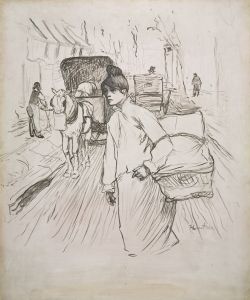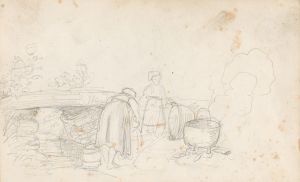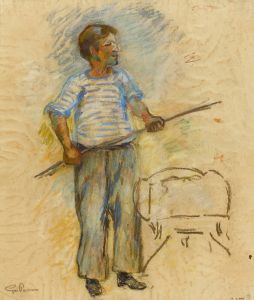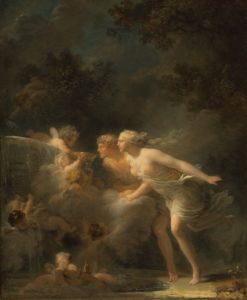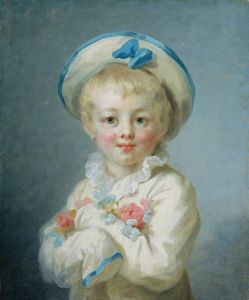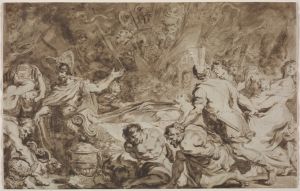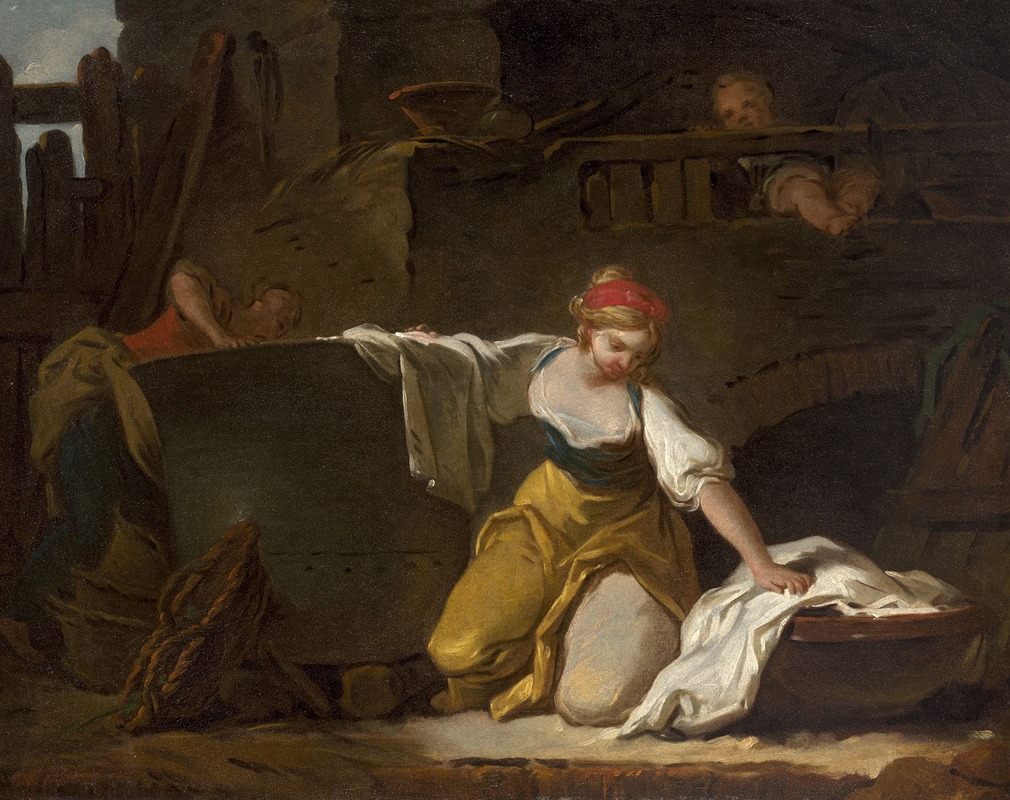
Jeunes lavandières
A hand-painted replica of Jean-Honoré Fragonard’s masterpiece Jeunes lavandières, meticulously crafted by professional artists to capture the true essence of the original. Each piece is created with museum-quality canvas and rare mineral pigments, carefully painted by experienced artists with delicate brushstrokes and rich, layered colors to perfectly recreate the texture of the original artwork. Unlike machine-printed reproductions, this hand-painted version brings the painting to life, infused with the artist’s emotions and skill in every stroke. Whether for personal collection or home decoration, it instantly elevates the artistic atmosphere of any space.
Jean-Honoré Fragonard, a prominent French Rococo painter, created the artwork "Jeunes lavandières" (Young Washerwomen) in the 18th century. Fragonard, born in 1732 and deceased in 1806, was known for his exuberant and hedonistic style, which often depicted scenes of love, playfulness, and domestic life. His works are characterized by their fluid brushwork, vibrant colors, and light-hearted themes, which were highly appreciated by the French aristocracy of his time.
"Jeunes lavandières" is a fine example of Fragonard's ability to capture everyday moments with a sense of charm and liveliness. The painting depicts a group of young women engaged in the activity of washing clothes by a river or stream, a common domestic chore during that period. The scene is set in a lush, natural landscape, which is typical of Fragonard's work, as he often incorporated elements of nature to enhance the idyllic and pastoral quality of his compositions.
In "Jeunes lavandières," Fragonard's use of light and shadow is particularly noteworthy. The sunlight filtering through the trees creates a dappled effect on the women's clothing and the surrounding foliage, adding a sense of depth and realism to the scene. The artist's skillful use of color further enhances the vibrancy of the painting, with the bright whites of the linens contrasting against the earthy tones of the landscape and the soft pastels of the women's dresses.
The composition of the painting is dynamic, with the figures arranged in a way that guides the viewer's eye through the scene. The women's poses are natural and relaxed, suggesting a moment of leisure and camaraderie amidst their work. This sense of ease and intimacy is a hallmark of Fragonard's genre paintings, which often celebrate the simple pleasures of everyday life.
Fragonard's "Jeunes lavandières" reflects the Rococo movement's emphasis on beauty, pleasure, and the fleeting moments of life. The painting's light-hearted subject matter and delicate execution exemplify the artist's mastery of the Rococo style, which was characterized by its ornate and decorative qualities. Despite the seemingly mundane subject, Fragonard elevates the scene to a work of art through his attention to detail and his ability to capture the essence of the moment.
The painting is also a testament to Fragonard's ability to convey emotion and narrative through his art. The young washerwomen, though engaged in a routine task, are depicted with a sense of joy and contentment, reflecting the artist's optimistic view of life. This positive outlook is a recurring theme in Fragonard's work, which often portrays scenes of happiness and harmony.
"Jeunes lavandières" remains an important piece in the study of 18th-century French art, offering insight into the daily lives of women during that period as well as the artistic trends of the time. Fragonard's work continues to be celebrated for its technical brilliance and its ability to capture the beauty of everyday moments.
In summary, Jean-Honoré Fragonard's "Jeunes lavandières" is a quintessential example of Rococo art, showcasing the artist's skill in rendering light, color, and composition to create a charming and lively depiction of young women at work. The painting remains a valuable piece of cultural history, reflecting both the artistic and social milieu of 18th-century France.







